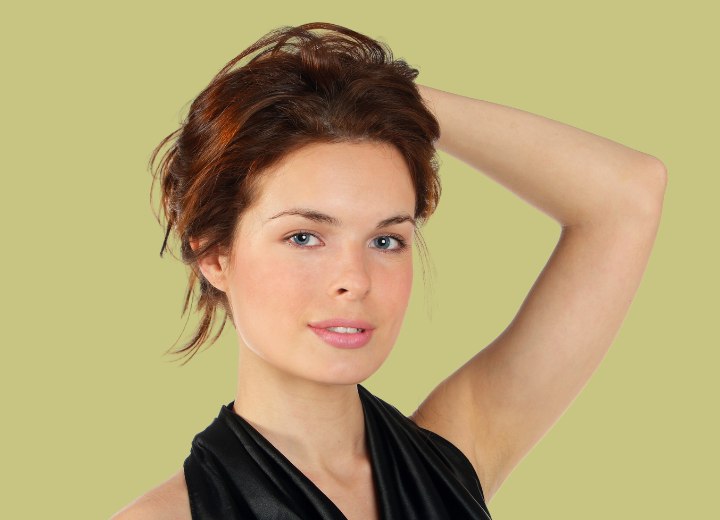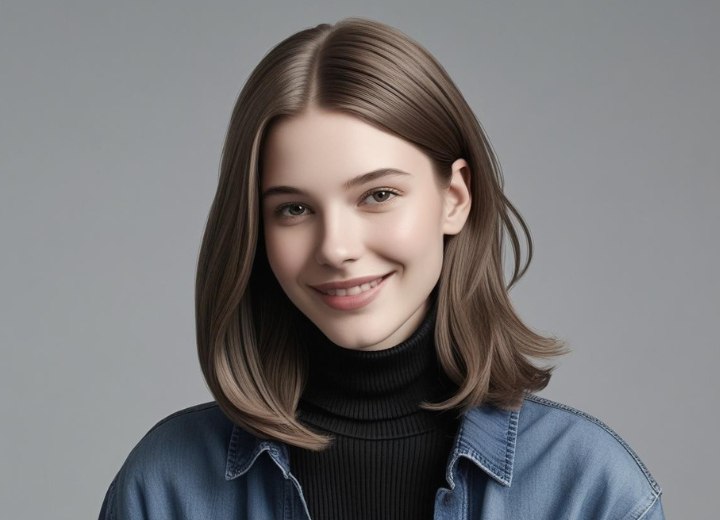Hair Growth Patterns

A: What you're experiencing is actually more common than you might think, and there are several reasons why this can happen. Assuming your hair is otherwise healthy and in good condition, you may simply be one of many people who have naturally asymmetrical growth patterns across different areas of your scalp.
This phenomenon isn't limited to just left-versus-right differences either. Some people have curly and straight hairs growing interspersed throughout their entire scalp, creating a naturally mixed texture. Others might have predominantly one texture with isolated patches that behave completely differently. These variations can range from subtle differences that only hair stylists notice to dramatic contrasts like yours.
Genetics play a significant role in these patterns. Hair texture genes can be expressed differently across various regions of your scalp, much like how some people have different colored hair in certain areas. Additionally, hormonal changes throughout your life can affect how these genes are expressed, which is why some people notice their hair texture changing as they age, go through puberty, experience pregnancy, or enter menopause.
However, environmental and lifestyle factors can also contribute to uneven hair textures. One side of your scalp might be exposed to different stresses than the other, causing the hair to behave differently over time. For instance, if you're a restless sleeper who consistently favors one side, the constant friction against your pillowcase can alter the hair's structure and appearance. Cotton pillowcases, in particular, can create significant friction that leads to frizz and breakage. This is why many hair care professionals recommend switching to silk or satin pillowcases.
Your daily styling routine might also be creating this asymmetry without you realizing it. If you're right-handed, you might naturally apply more pressure or heat to the left side of your head when blow-drying or styling. Similarly, if you frequently wear your hair in ponytails or buns, the tension and placement might affect one side more than the other.

To determine if there's a specific cause for your hair's behavior, take some time to analyze your daily habits. Do you always sleep on the same side? Are you frequently in situations where one side of your head receives more environmental stress than the other? If you can identify a pattern, you might be able to address the root cause.
If you can't pinpoint any obvious environmental factors, it's quite likely that this is simply your hair's natural growth pattern, and there's absolutely nothing wrong with that. Many people have asymmetrical hair textures, and it's just one of the many ways that makes each person's hair unique.
When it comes to managing your mixed hair textures, you have several options. If you enjoy the contrast and want to work with your hair's natural tendencies, you can learn to style each side differently to enhance their individual characteristics. The curly side might benefit from curl-enhancing creams, while the straight side could be styled with volumizing products and gentle brushing.
If you prefer a more uniform look, you can choose to style your entire head to match whichever texture you prefer. To make everything curly, you could use curl-enhancing products throughout, employ techniques like scrunching, use roller sets, or even consider a perm for longer-lasting results.
Alternatively, if you prefer straight hair, you can blow-dry with a round brush or use a flat iron to straighten the curly side. For a more permanent solution, permanent straightening treatments can help create uniformity.
Regardless of which approach you choose, maintaining healthy hair should be your top priority.
©Hairfinder.com
See also:
Uneven hair growth
Hair straightening
Roller styling techniques